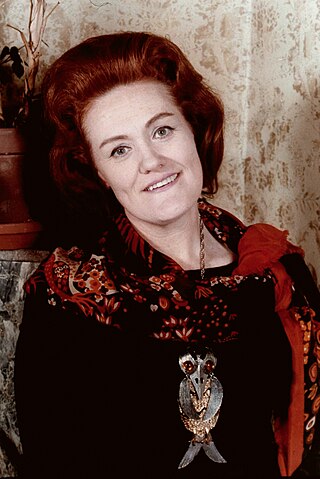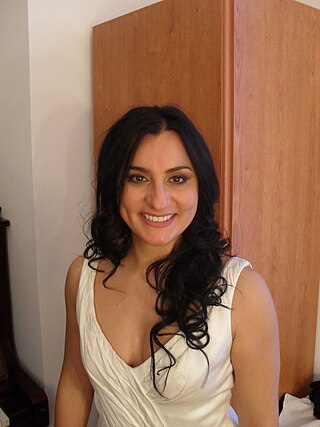Style
The general style of these works is more simplistic and tuneful than Bellini's operatic text-setting. While the romanzas may contain some dramatic elements, the ariette conform to a song-like melody as in Vaga luna, che inargenti. This famous example is strophic and plainly sung with scant accompaniment. This kind of texture contrasts strikingly against Bellini's melodramatic and emotive arias in operas like Norma .
While these works find few similarities with the operatic style of the early 19th century, it is likely that some folk influence, especially from Bellini's native Sicily, may have inspired their melodies. The poetry is in most cases anonymous and usually incorporates a folk meter. In response to their romantic theme and florid imagery, Bellini provides restrained and enchanting melodies. Each piece within Composizioni da Camera revolves around a common theme: unrequited love.

Vincenzo Salvatore Carmelo Francesco Bellini was an Italian opera composer, who was known for his long-flowing melodic lines for which he was named "the Swan of Catania". Many years later, in 1898, Giuseppe Verdi "praised the broad curves of Bellini's melody: 'there are extremely long melodies as no-one else had ever made before'."

Francesco Cilea was an Italian composer. Today he is particularly known for his operas L'arlesiana and Adriana Lecouvreur.

Luciano Pavarotti was an Italian operatic tenor who during the late part of his career crossed over into popular music, eventually becoming one of the most acclaimed tenors of all time. He made numerous recordings of complete operas and individual arias, gaining worldwide fame for his tone, and gaining the nickname "King of the High Cs".

Dame Joan Alston Sutherland, was an Australian dramatic coloratura soprano known for her contribution to the renaissance of the bel canto repertoire from the late 1950s through to the 1980s.

Renata Scotto is an Italian soprano and opera director.
"Nessun dorma" is an aria from the final act of Giacomo Puccini's opera Turandot and one of the best-known tenor arias in all opera. It is sung by Calaf, il principe ignoto, who falls in love at first sight with the beautiful but cold Princess Turandot. Any man who wishes to wed Turandot must first answer her three riddles; if he fails, he will be beheaded. In the aria, Calaf expresses his triumphant assurance that he will win the princess.
June Anderson is a Grammy Award-winning American coloratura soprano. She is known for bel canto performances of Rossini, Donizetti, and Vincenzo Bellini.

Juan Diego Flórez is a Peruvian operatic tenor, particularly known for his roles in bel canto operas. On June 4, 2007, he received his country's highest decoration, the Knight Grand Cross in the Order of the Sun of Peru.
"Che gelida manina" is a tenor aria from the first act of Giacomo Puccini's opera, La bohème. The aria is sung by Rodolfo to Mimì when they first meet. In the aria he tells her of his life as a poet, and ends by asking her to tell him more about her life. It is one of the most recorded arias by tenors.

Ramón Vargas is a Mexican operatic tenor. Since his debut in the early '90s, he has developed to become one of the most acclaimed tenors of the 21st century. Known for his most expressive and agile lyric tenor voice, he is especially successful in the bel canto repertoire.

Adolfo Fumagalli was a 19th-century Italian virtuoso pianist and composer, known today primarily for his virtuosic compositions for the left hand alone.

Carlo Colombara is an Italian operatic bass. He has sung leading roles in many major opera houses including Teatro alla Scala ; the Vienna State Opera ; the Real Teatro di San Carlo ; the Arena di Verona ; the Royal Opera House, and the Metropolitan Opera.

Marcello Giordani was an Italian operatic tenor who sang leading roles of the Italian and French repertoire in opera houses throughout Europe and the United States. He had a distinguished association with the New York Metropolitan Opera, where he sang in over 240 performances from the time of his debut there in 1993. He founded the Marcello Giordani Foundation to help young opera singers.

"Vaga luna, che inargenti" is an arietta composed by Vincenzo Bellini to an anonymous Italian text and dedicated to Giulietta Pezzi. It was published in 1838 by Casa Ricordi in Tre ariette inedite along with two other Bellini songs, "Il fervido desiderio" and "Dolente immagine di Fille mia". It was also amongst the fifteen Bellini songs published by Ricordi under the title Composizioni da Camera in 1935, the centenary of the composer's death. Composed in the bel canto style, it is a frequent recital piece, and has often been recorded. Its original key is in A-flat major with a tempo of andante cantabile.
Fabio Campana was an Italian composer, opera director, conductor, and singing teacher who composed eight operas which premiered between 1838 and 1869. He was born in Livorno, the city where his first two operas premiered, but in the early 1850s he settled in London. There he opened a famous singing school, conducted concerts, and continued his reputation as a prolific and popular composer of art songs and concert arias. His last opera, Esmeralda, premiered in Saint Petersburg in 1869, followed by London performances in 1870 with Adelina Patti in the title role. Campana died in London at the age of 63. Although his operas are no longer performed, his art songs can be heard on several modern recordings.

Carmela Remigio is an Italian operatic soprano.

Giulietta Pezzi was an Italian writer and journalist whose work included poetry, four novels, and a five-act play. Born and educated in Milan, she was a devoted follower of Mazzini and active in the Italian republican and unification movements. In her later years she wrote for several newspapers and dedicated herself to the establishment of free public schools in Italy based on Mazzini's educational philosophy. She died in the city of her birth at the age of 71. During her lifetime several art songs were dedicated to her, including Bellini's "Vaga luna, che inargenti".
Leone Magiera is an Italian pianist and conductor.

The Messa da requiem in D minor (1835) is a musical setting of the Catholic funeral mass (Requiem) by Italian opera composer Gaetano Donizetti. It is scored for five soloists, mixed chorus and orchestra. A performance lasts about 62–75 minutes.











